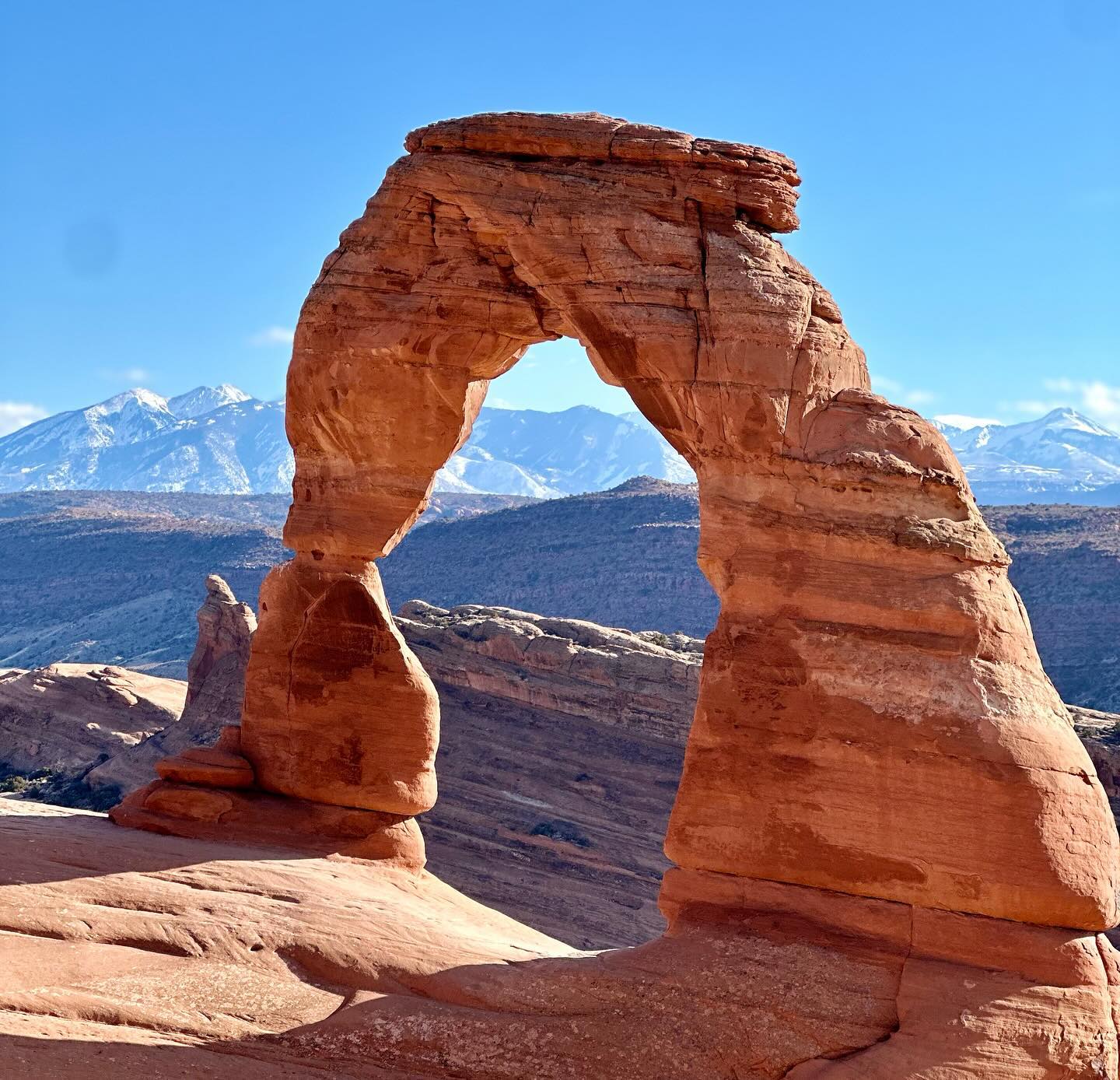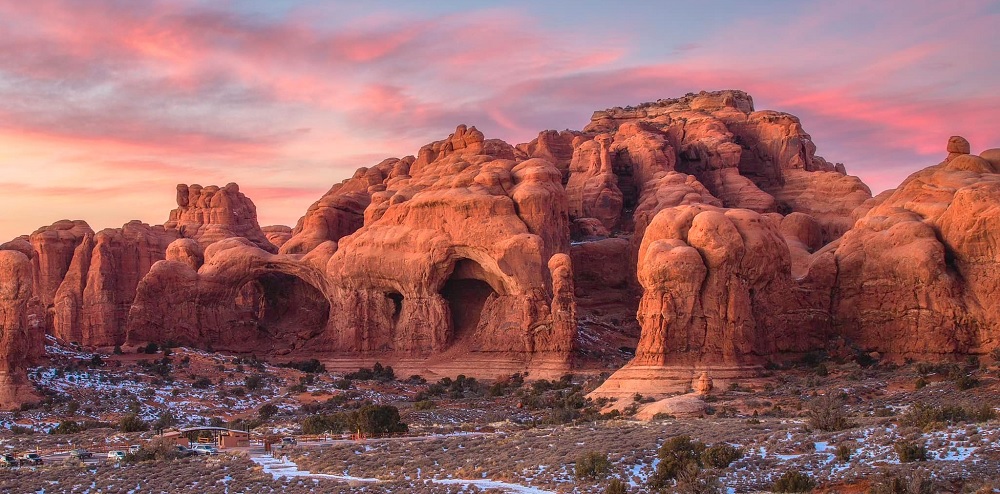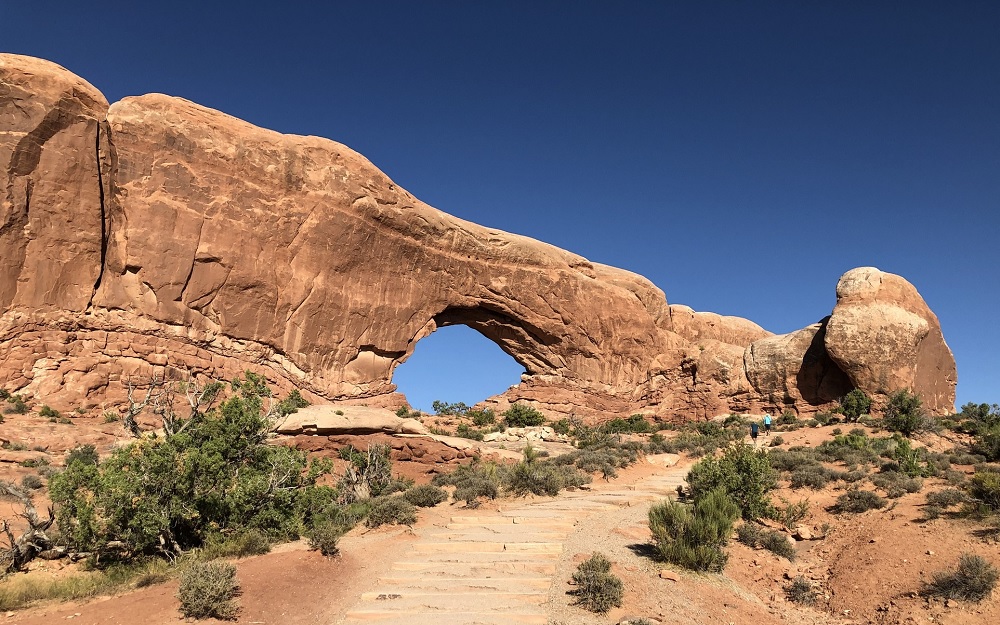Nestled in the heart of Utah, USA, Arches National Park stands as a testament to the raw power of geological forces and the intricate beauty they create. Spread across 76,679 acres of desert landscape, this national park is renowned for its stunning red rock formations, expansive vistas, and, of course, its plethora of natural sandstone arches.
As one of the most iconic destinations in the United States, Arches National Park draws visitors from around the globe, offering them a glimpse into a world shaped by millions of years of geological evolution.
Geological Wonders
At the heart of Arches National Park lies its most famous feature: the arches themselves. Carved by the forces of erosion, these natural wonders come in all shapes and sizes, from delicate, slender arches to massive, imposing spans of rock. The park boasts over 2,000 cataloged arches, making it the world's largest concentration of natural stone arches.
One of the most iconic arches within the park is Delicate Arch, standing proudly atop a sandstone ridge with the backdrop of the distant La Sal Mountains. This majestic arch has become an enduring symbol of the American West, its image gracing countless postcards and travel brochures.
Another notable arch is the Landscape Arch, known for its impressive length of over 300 feet, making it one of the longest natural stone arches in the world.

A Geological Timeline
The story of Arches National Park begins over 300 million years ago when this region was covered by a vast ocean. Over time, layers of sediment accumulated on the ocean floor, eventually solidifying into sandstone and shale. As the forces of tectonic activity and erosion reshaped the landscape, the sturdy sandstone layers began to form arches, spires, and other unique rock formations.
The primary agent of change in Arches National Park is water. Although the region is now a desert, intermittent streams and flash floods still sculpt the rock, carving out new features and shaping the land. Over millions of years, these natural forces worked in concert to create the breathtaking vistas that visitors marvel at today.

Biodiversity in the Desert
While Arches National Park is primarily known for its geological wonders, it is also home to a surprising variety of plant and animal life. Despite the harsh desert environment, life has found a way to thrive in this seemingly inhospitable landscape.
Juniper and pinyon pine trees cling to the rocky slopes, providing habitat for birds and small mammals. Desert wildflowers bloom in the spring, carpeting the desert floor with bursts of color. Bighorn sheep, coyotes, and kangaroo rats are just a few of the creatures that call this desert ecosystem home.

Exploring the Park
Visitors to Arches National Park have a variety of options for exploring its wonders. Scenic drives wind through the park, offering panoramic views of the rugged terrain. Numerous hiking trails lead to iconic landmarks such as Delicate Arch, Balanced Rock, and Double Arch, allowing visitors to experience the park up close.
For the more adventurous, backcountry camping and backpacking opportunities abound, providing the chance to immerse oneself in the solitude and serenity of the desert landscape. Rock climbing is another popular activity, with routes ranging from beginner-friendly to expert-level challenges.
Preserving a Natural Treasure
As one of America's most beloved national parks, Arches faces the dual challenge of accommodating a growing number of visitors while preserving its fragile ecosystem for future generations. Park officials work tirelessly to balance conservation efforts with the need to provide access and education to the public.
Visitor education programs aim to promote responsible stewardship of the park, emphasizing the importance of leaving no trace and minimizing human impact on the fragile desert environment. Infrastructure improvements such as shuttle services and designated parking areas help reduce congestion and protect sensitive areas from damage.

Conclusion
Arches National Park is a place of wonder and awe, where the forces of nature have sculpted a landscape unlike any other on Earth. From towering arches to sweeping vistas, every corner of this desert wilderness tells a story millions of years in the making.
As visitors wander through its red rock corridors and gaze up at the endless expanse of sky, they can't help but be humbled by the sheer beauty and majesty of this natural masterpiece.
Arches National Park stands as a timeless reminder of the power and grandeur of the natural world, beckoning adventurers to explore its wonders and discover the secrets hidden within its ancient stone walls.



You must be logged in to post a comment.